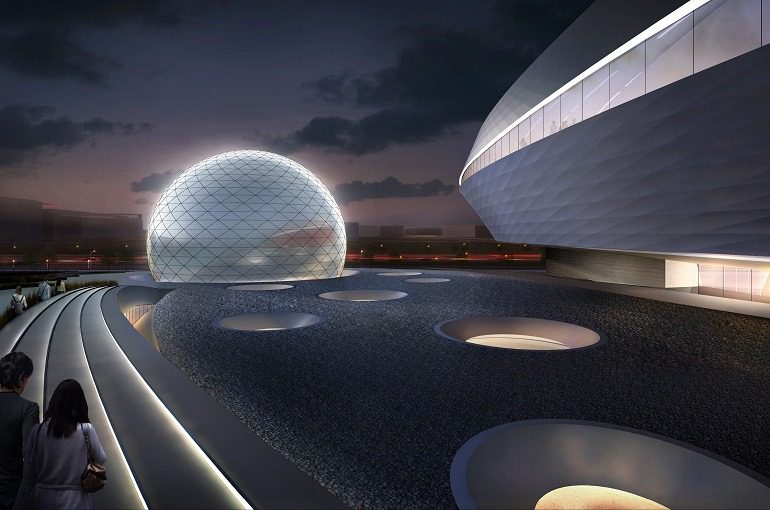ARCHITECTURE
Shanghai Planetarium Museum Design, the new museum project by Ennead Architects. Image courtesy of Planetarium Ennead Architects
ART NEWS
New Shanghai Planetarium Museum design bridges the past to the future

Shanghai Planetarium, the new museum project by Ennead Architects 03. Image courtesy of Planetarium Ennead Architects
BY KAZAD
NEW YORK, NY– Ennead Architects has been commissioned to design the new Shanghai Planetarium branch of the Shanghai Science and Technology Museum (SSTM). The architecture company got the commission to design the Museum after winning an international competition that attracted international designers and reputable architecture companies.
The Museum design team will be led by Ennead Architects Design Partner Thomas Wong and Management Partner Guy Maxwell. Spanning 38,000 square meter / 409,000 square foot, the Museum will focus on astronomy and planetary science. Beyond elevating the SSTM’s scientific and technological capacity, the new museum design will help define a new identity for the Lingang district of the City, southeast of Shanghai’s central business district.
The new Shanghai Planetarium branch of the Shanghai Science and Technology Museum design serves as a bridge from the past to the future. According to Ennead Architects, the design is a convergence of time and space. ” The Museum design celebrates the continuum of time and space: it is modern and forward-looking and at the same time is a link to the past, mirroring both the rich history of Chinese astronomy and the future ambitions of China’s space exploration program,” the firm notes.
The design strategy for the new museum draws inspiration from astronomical principles based on the experience of orbital motion. Ennead Architects articulates the design thus:
Three “celestial bodies” comprise the architecture: the Oculus, the Inverted Dome and the Sphere. Each major element acts as an astronomical instrument, tracking the sun, moon and stars – reminding visitors that our conception of time originates in distant astronomical objects and enriching the museum exhibit experience with actual encounters of celestial movement. The building form, program and circulation further incorporate the orbital movement, supporting the flow of visitors through the galleries and the experience of the three central bodies.
The objective of the new museum design is to create a new experience for visitors to the Museum. By linking the new Museum to both scientific purpose and to the celestial references of buildings throughout history, it is expected that the exhibits and architecture will transcend “scientific content and illuminate what it means to be human in a vast and largely unknown universe.”
ARCHITECTURE & DESIGN| READ ALSO: Design Competition Provides Solution for Intense Weather Events in U.S Cities
Located within an expansive green zone in the Lingang district, the ample Museum grounds will incorporate exterior exhibitory, including a 24-meter-high solar telescope, as well as evening activities at a Youth Observation Camp and Observatory.
The Museum will include permanent exhibit galleries, temporary exhibit galleries, a 21-meter-diameter Digital Sky Theater, an 18-meter-diameter Optical Planetarium, IMAX theater, Education, and Research Center, Solar Telescope, Youth Observation Camp, and Observatory.
Join the art conversation: Share your thoughts and comments. Add to the story
